With the Australian sun illuminating the crystal clear waters of the Great Barrier Reef in all their glory, UNESCO World Heritage delegates snorkelled for hours surrounded by manta rays, dolphins and reef sharks. Their mission was to check the health of the world's largest living ecosystem, thousands of multi-coloured coral reefs stretching over 2,000 km off the northeast coast which bring in billions of dollars a year in tourism. Some coral has been badly damaged and certain animal species, including dugong and large green turtles, are threatened. UNESCO will announce on Wednesday whether it’s going to place the reef – larger than the United Kingdom, Holland and Switzerland combined – on a list of endangered World Heritage sites. That’s a move the Australian government wants to avoid at all costs. Such a listing could lead to restrictions on shipping and port expansion that could hit Australia's trade in commodities and energy. Government ministers have been lobbying hard overseas, while the UNESCO delegates snorkelled in the least damaged area of the reef following a warning by the UN body that the reef risked a blacklisting. Peter Gash, managing director of the Lady Elliot Island Eco-Resort on the southern end of the reef, hopes that it’s mission accomplished for the government. “I have no doubt that they (UNESCO delegates) had a perception that the barrier reef was dead. That it was doomed, it was down, it was in a bad place”, Gash said. “And that's not the case at all”.
But not everyone is convinced. In 2010, a Chinese coal carrier ran aground on the reef, provoking an international outcry. Since then, there has been renewed concern about development, particularly coal mining in the northeastern state of Queensland and shipping. Greenpeace said 50 percent of the reef's coral cover had been lost in the last 30 years. Earlier this year, UNESCO said the reef's outlook was “poor”. UN delegates spent the bulk of their visit to Queensland hearing detailed scientific rundowns on the reef, the government said. Locals said the visitors spent a lot of time cavorting with the animals at one of the few remaining unspoiled stretches of the reef. Felicity Wishart, Great Barrier Reef campaign director at the Australian Marine Conservation Society, has no doubt why Lady Elliot Island was chosen for the field trip. “It's one of the most stunning islands in the reef system. It's also in the outer reef ... So it's about as far east of the coastline that you can get”, she said, pointing out that most damage is done closer to the mainland. Wishart pointed to a 2014 report released by the Great Barrier Marine Park Authority, in which major questions were raised about the reef's future. “There is no doubt that the reef is still in serious environmental danger”, she said.
But not everyone is convinced. In 2010, a Chinese coal carrier ran aground on the reef, provoking an international outcry. Since then, there has been renewed concern about development, particularly coal mining in the northeastern state of Queensland and shipping. Greenpeace said 50 percent of the reef's coral cover had been lost in the last 30 years. Earlier this year, UNESCO said the reef's outlook was “poor”. UN delegates spent the bulk of their visit to Queensland hearing detailed scientific rundowns on the reef, the government said. Locals said the visitors spent a lot of time cavorting with the animals at one of the few remaining unspoiled stretches of the reef. Felicity Wishart, Great Barrier Reef campaign director at the Australian Marine Conservation Society, has no doubt why Lady Elliot Island was chosen for the field trip. “It's one of the most stunning islands in the reef system. It's also in the outer reef ... So it's about as far east of the coastline that you can get”, she said, pointing out that most damage is done closer to the mainland. Wishart pointed to a 2014 report released by the Great Barrier Marine Park Authority, in which major questions were raised about the reef's future. “There is no doubt that the reef is still in serious environmental danger”, she said.
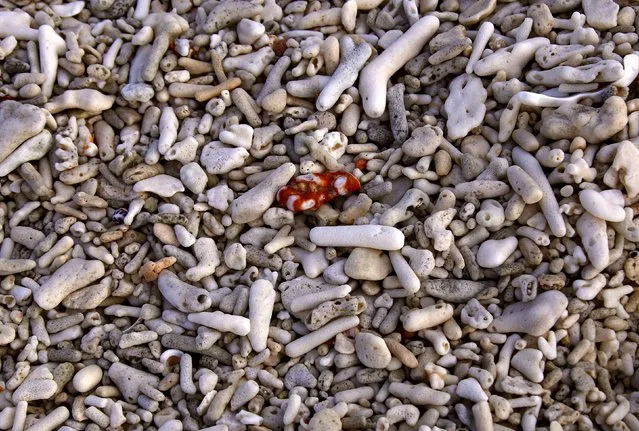
Dried coral and shells lie on a beach on Lady Elliot Island, north-east of the town of Bundaberg in Queensland, Australia, June 10, 2015. (Photo by David Gray/Reuters)

Peter Gash, owner and manager of the Lady Elliot Island Eco Resort, prepares to snorkel during an inspection of the reef's condition in an area called the “Coral Gardens” located at Lady Elliot Island, north-east of the town of Bundaberg in Queensland, Australia, June 11, 2015. (Photo by David Gray/Reuters)
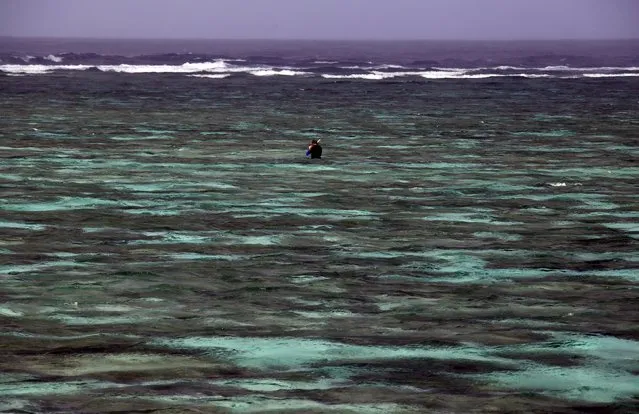
A tourist snorkels in the lagoon located on Lady Elliot Island, north-east of the town of Bundaberg in Queensland, Australia, June 9, 2015. (Photo by David Gray/Reuters)
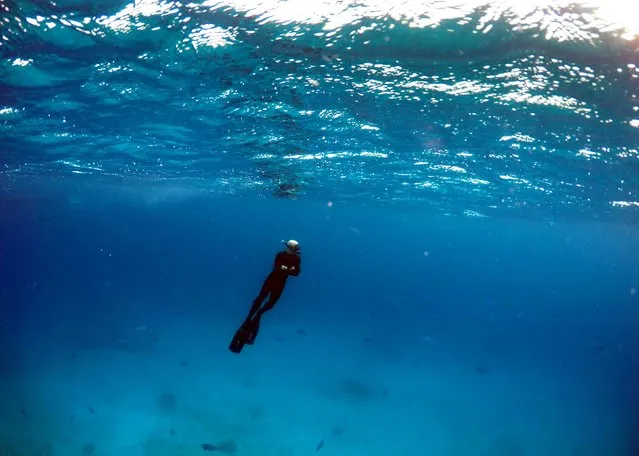
A tourist snorkels in an area called the “Coral Gardens” located at Lady Elliot Island, north-east of the town of Bundaberg in Queensland, Australia, June 10, 2015. (Photo by David Gray/Reuters)
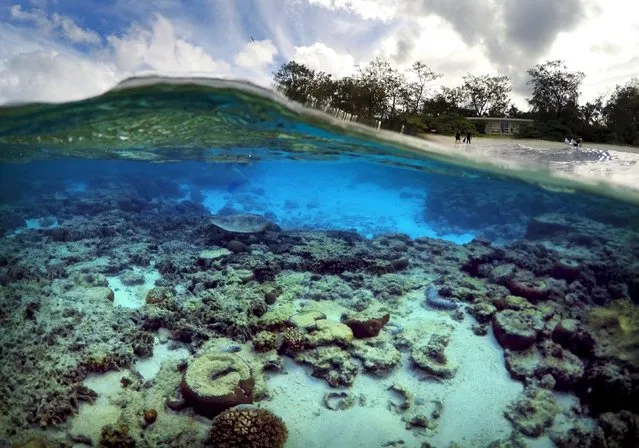
Tourists stand in front of huts that form part of the Lady Elliot Island Eco Resort where a turtle digs for food amongst the coral in the island's lagoon, north-east of the town of Bundaberg in Queensland, Australia, June 9, 2015. (Photo by David Gray/Reuters)
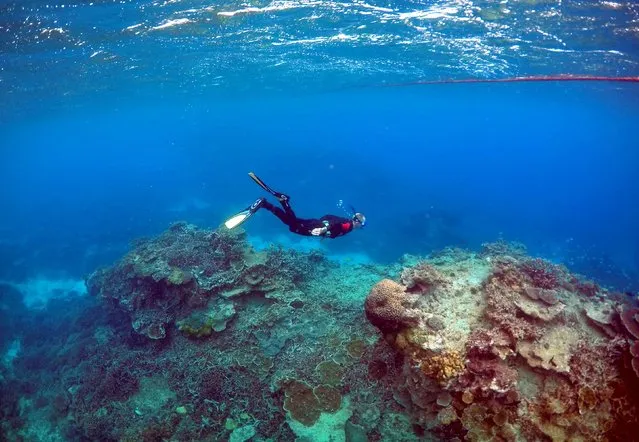
Peter Gash, owner and manager of the Lady Elliot Island Eco Resort, snorkels during an inspection of the reef's condition in an area called the “Coral Gardens” located at Lady Elliot Island, north-east of the town of Bundaberg in Queensland, Australia, June 11, 2015. (Photo by David Gray/Reuters)
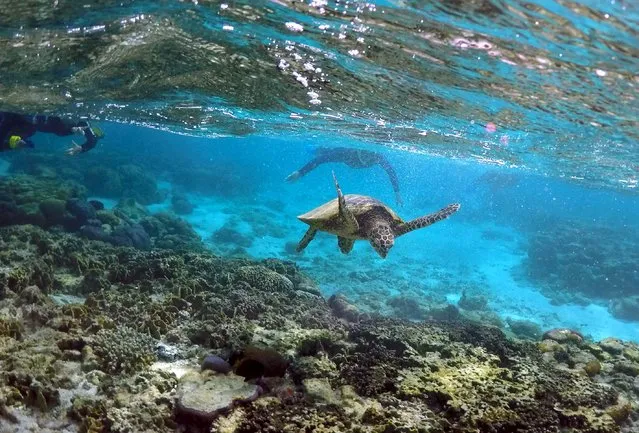
Tourists snorkel near a turtle as it looks for food amongst the coral in the lagoon at Lady Elliot Island north-east of the town of Bundaberg in Queensland, Australia, June 9, 2015. (Photo by David Gray/Reuters)
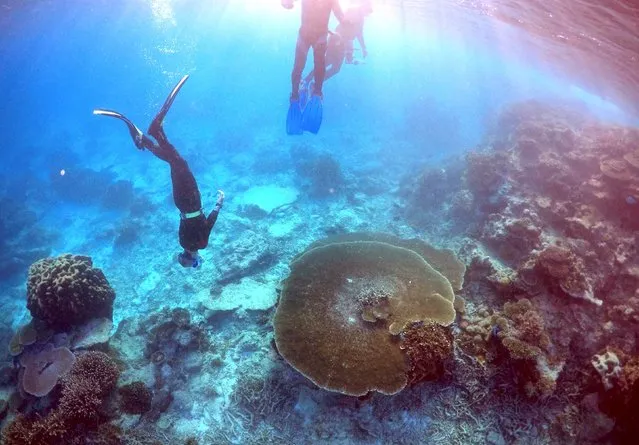
Peter Gash (L), owner and manager of the Lady Elliot Island Eco Resort, snorkels with Oliver Lanyon and Lewis Marshall, senior rangers in the Great Barrier Reef region for the Queenlsand Parks and Wildlife Service, at Lady Elliot Island, north-east of the town of Bundaberg in Queensland, Australia, June 11, 2015. (Photo by David Gray/Reuters)
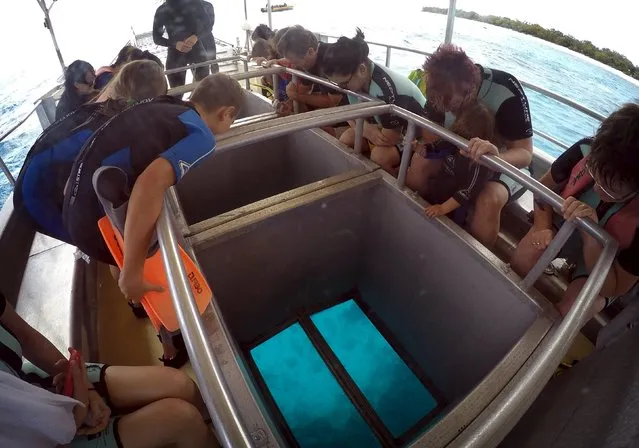
Tourists look through a glass window in the bottom of a boat as it floats above an area called the “Coral Gardens” located at Lady Elliot Island, north-east of the town of Bundaberg in Queensland, Australia, June 10, 2015. (Photo by David Gray/Reuters)
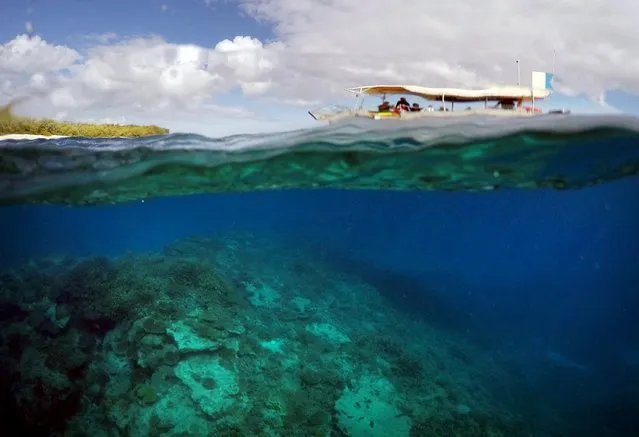
A boat carrying tourists floats above an area called the “Coral Gardens” near Lady Elliot Island, north-east of the town of Bundaberg in Queensland, Australia, June 10, 2015. (Photo by David Gray/Reuters)
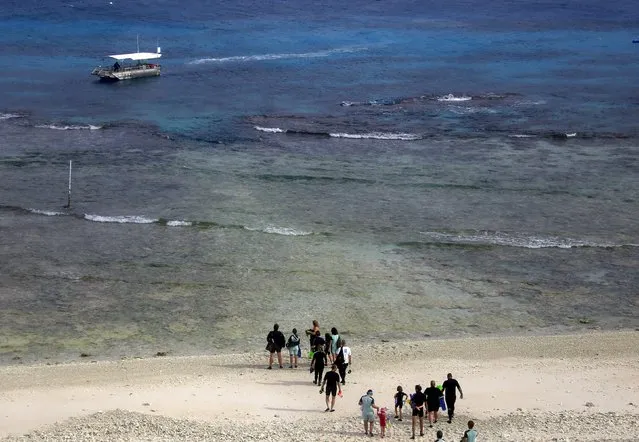
Tourists prepare to board a boat to snorkel in an area called the “Coral Gardens” located at Lady Elliot Island, north-east of the town of Bundaberg in Queensland, Australia, June 10, 2015. (Photo by David Gray/Reuters)
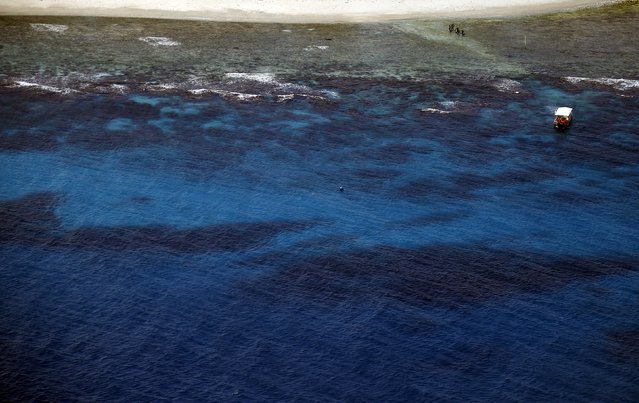
Tourists walk from a boat after diving in an area called the “Coral Gardens” located at Lady Elliot Island, north-east of the town of Bundaberg in Queensland, Australia, June 9, 2015. (Photo by David Gray/Reuters)
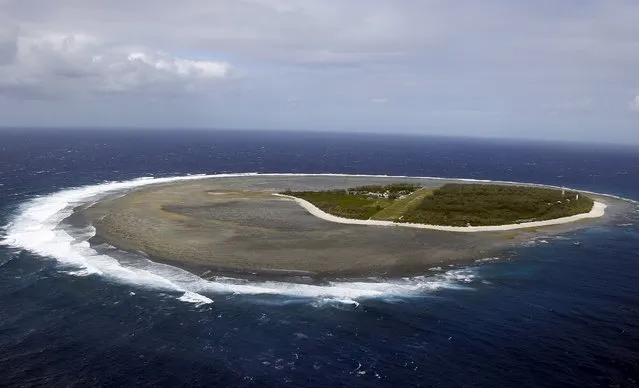
An aerial view of Lady Elliot Island located north-east of the town of Bundaberg in Queensland, Australia, June 11, 2015. (Photo by David Gray/Reuters)
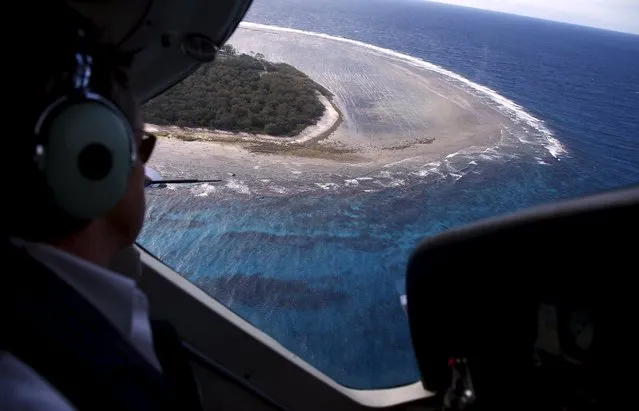
Pilot John Peaker prepares to land on Lady Elliot Island located north-east of the town of Bundaberg in Queensland, Australia, June 9, 2015. (Photo by David Gray/Reuters)
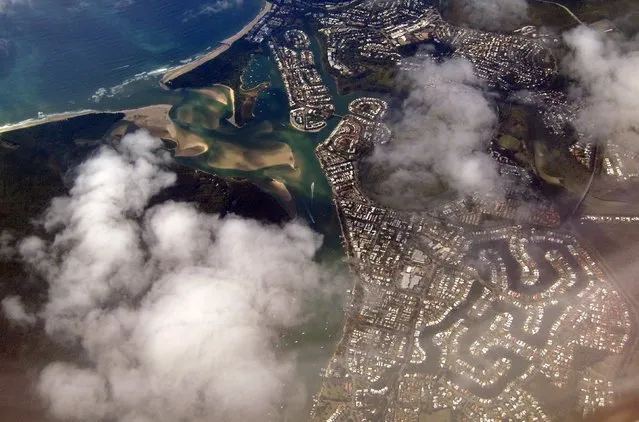
Homes can be seen along a creek and inlet in the coastal town of Hervey Bay, north of Brisbane in Queensland, Australia, June 9, 2015. (Photo by David Gray/Reuters)
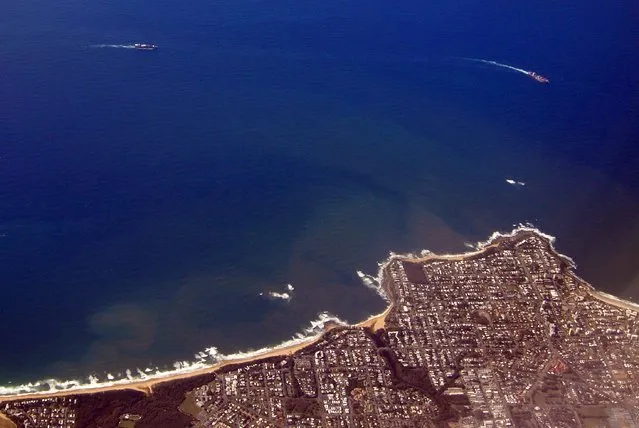
Sediment can be seen in the water as ships and boats sail past the coastal town of Hervey Bay, north of Brisbane in Queensland, Australia, June 9, 2015. (Photo by David Gray/Reuters)
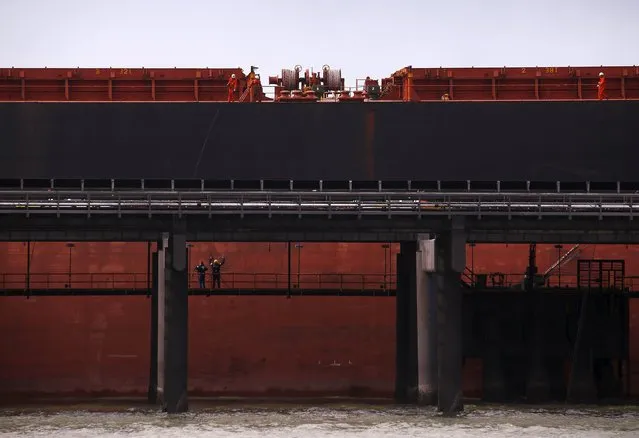
Port workers load a ship with coal at the RG Tanna Coal Terminal located at the town of Gladstone in Queensland, Australia, June 12, 2015. (Photo by David Gray/Reuters)
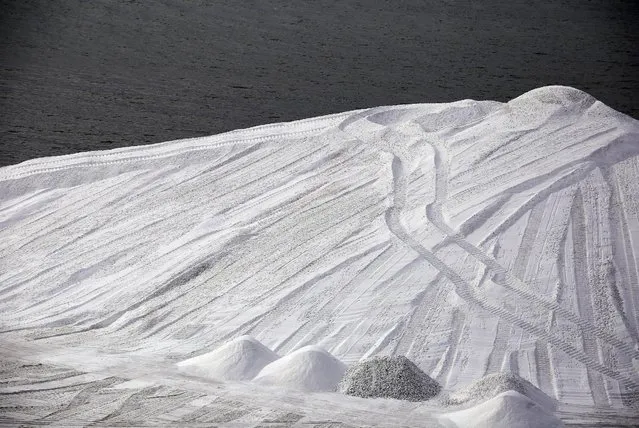
A pile of processed metal sits near the Barney Point shipping port located in the town of Gladstone in Queensland, Australia, June 12, 2015. (Photo by David Gray/Reuters)
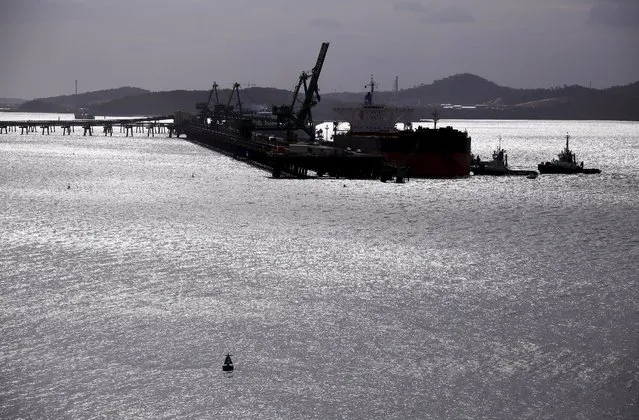
A ship is loaded with coal at the RG Tanna Coal Terminal located at the town of Gladstone in Queensland, Australia, June 12, 2015. (Photo by David Gray/Reuters)
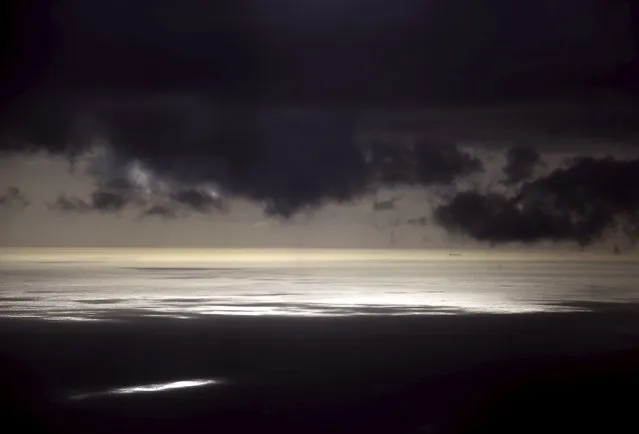
Storm clouds can be seen above a coal ship as it sails near Lady Elliot Island located north-east of the town of Bundaberg in Queensland, Australia, June 9, 2015. (Photo by David Gray/Reuters)
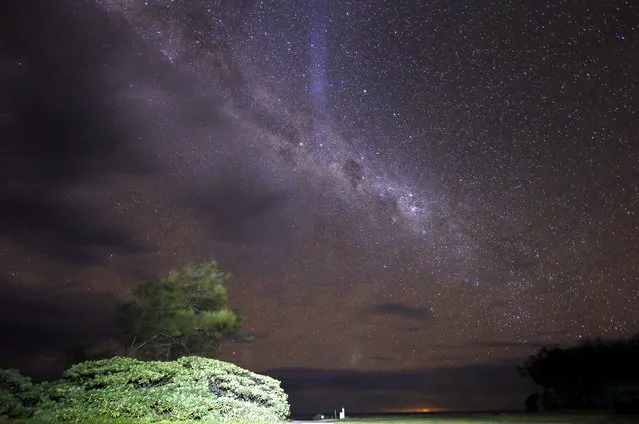
The Milky Way is seen in the sky above a path and huts on Lady Elliot Island located north-east of the town of Bundaberg in Queensland, Australia, June 10, 2015. (Photo by David Gray/Reuters)
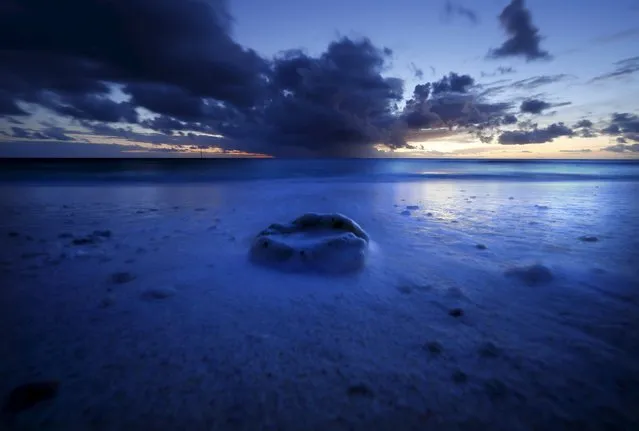
A reef shell lies on a beach as the sun sets on Lady Elliot Island located north-east of the town of Bundaberg in Queensland, Australia, June 10, 2015. (Photo by David Gray/Reuters)
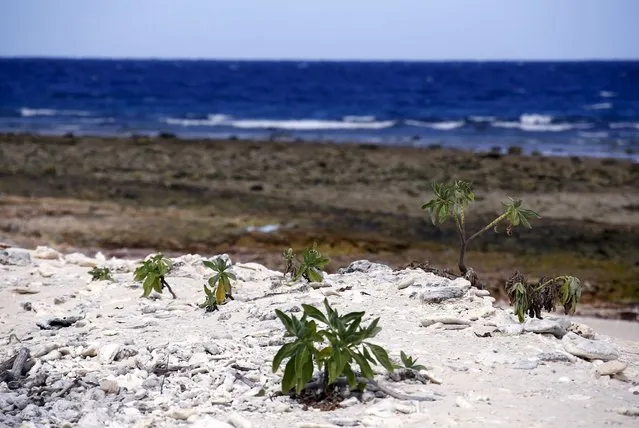
Small bushes grow on a coral beach on Lady Elliot Island located north-east of the town of Bundaberg in Queensland, Australia, June 9, 2015. (Photo by David Gray/Reuters)
30 Jun 2015 12:21:00,
post received
0 comments
